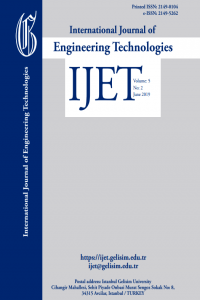Evaporation Plant for Recycling of Caustic Soda
The most important problem that humanity is expected to face in the coming century shall be environmental pollution. On one hand, the population of human beings are using natural resources rapidly, on the other hand, they are adding hundreds of pollutants in the form of metals, acids, bases and etc. Thus, they have created an abnormal situation which has resulted in an imbalance in the natural systems. As the industrialization improves, it creates pollution and also it creates jobs for the people. Especially in developed countries, for instance European countries and U.S.A. there are also many stringent restrictions for the environmental pollution, and there are many laws, political arrangements. Of course , a pollution free environment will require a high cost, often an expensive operation. However , it is much more costlier trying to undo the damage done. On the basis of concept tried to mention above human beings have studied on the subjects related with environmental pollution. They have established waste water treatment plants, many kinds of recycling and recovery plants, and etc. In this study , it has been tried to establish such an idea that a pollution free environment may be available if this technical process is used properly. So, the first goal of this study is to provide a concise statement of the requirements and opportunities for obtaining environmental benefits. The second objective will be to provide economical savings while providing the environmental benefits at the same time. To emphasize the great importance of above mentioned subjects the application of recycle technology for the sodium hydroxide (NaOH), which is named as caustic soda in industrial processes, realized by means of an evaporation plant is used. Caustic soda is used in textile industry for mercerizing process as it is used in many different processes. To give the cotton more strength and to obtain a smoother surface and an improved affinity the mercerizing is essential. After being finished the mercerizing operation, generally the process solution (containing caustic soda) is discharged to the environment,. e.g. , rivers, seas and sewage. In spite of the fact that this application is widely spread in use, it is forbidden in all developed countries to discharge the caustic soda solutions even at a 1% concentration since the caustic soda is highly basic (highly alkaline). For this reason it is very harmful for the environment. It is possible to extract the caustic soda from the caustic soda solutions before discharging it to the environment for preventing the harms of this material. The washing water containing NaOH will be concentrated by H2O evaporation and shall be recycled in the mercerizing system. The concentration may take place in a single or multiple – stage (double–stage) installation under vacuum or atmospheric pressure. The washing water to be concentrated is moved from the storage tank to the first evaporation stage and the thermal energy for evaporation operation is added by the steam. The vapor coming from the first evaporation stage is used for the next evaporation stage as the heating steam of this unit. The vapor from the last stage is condensed in a condenser. The condensed vapor can be safely discharged and the concentrated caustic soda can be reused for the subsequent mercerizing operation. So, both economical profits and environmental benefits can be provided by reusing the caustic soda for next processes , after it is recovered by the help of this way. Desalination unit in Jeddah which is the capital city of Saudi Arabia , is an example for this kind of operations.. This plant was established 1970’s and has been used as both a power station and a desalination unit. At this plant the exhaust steam coming from the steam turbines is used as the heating steam for evaporators of desalination unit. Unfortunately, in our country, even in İzmir, the waste water of textile industry is discharged to the environment. Because , the environmental laws are not adequate and the enterprisers think that a recycling plant is not an economical investment. However , it is stated in this study that such a concept is not right. It has been tried to show that such an investment, i.e., “An Evaporation Plant for Recycling of Caustic Soda” may be profitable if it is installed and operated properly, and also it has been tried to increase the attractivity of these kinds of plants . It is hoped that, the laws and stringent restrictions related with environment shall be arranged, so that we shall live in a healthy world.
Keywords:
Evaporation, Recycling, Caustic soda, Sodium hydroxide, Vacuum Steam,
___
- Elmas, Emin Taner , (1999) Evaporation Plant For Recyling of Caustic Soda, M.Sc. Thesis, İzmir.
- Foust,A.S. , Wenzel,L.A. , Clump ,C.W. , Maus,L. , & Andersen,L.B. (1959). Principles of Unit Operations . Pennsylvania : John Wiley & Sons , Inc.
- Özcan,Y. (1978). Tekstil Elyaf ve Boyama Tekniği. İstanbul.
- Dokuz Eylül Üniv. Müh. - Mim. Fakültesi ve Ege Bölgesi Sanayi Odası. (18-19 Ekim 1983). Vakum Teknolojileri ve Vakum Metalurjisi Sempozyumu. İzmir.
- Kern,D.Q. (1950). Process Heat Transfer. Tokyo : Kögakusha Company,Ltd.
- Kirk - Othmer. (1970) Encylopedia of Chemical Technology. 22.Vol. 2.ed. Water (Desalination) to Zone Refining . New York: John Wiley & Sons ,Inc.
- Kirk - Othmer. (1967) Encylopedia of Chemical Technology. 4.Vol. 2.ed. New York: John Wiley & Sons ,Inc.
- Jeffries,M. , & Mills,D. (1994). Freshwater Ecology Principles and Applications. Chichester: John Wiley & Sons.
- Henglein,F.A. (1969). Chemical Technology. Karlsruhe:Pergamon Press Ltd. & Headington Hill Hall,Oxford.
- Perry,R.H., & Chilton,C.H. (1969). Chemical Engineers’Handbook. Tokyo:McGraw-Hill Kogakusha , Ltd.
- Badger,W.L. , & Banchero,J.T. (1955). Introduction to Chemical Engineering. : Kogakusha Company ,Ltd. ,McGraw-Hill Book Company ,Inc.
- Mc.Cabe,W.L. , Smith, J.C. , & Harriott,P. (1967). Unit Operations of Chemical Engineering. New York : McGraw-Hill Book Company.
- ISSN: 2149-0104
- Başlangıç: 2015
- Yayıncı: İstanbul Gelişim Üniversitesi
